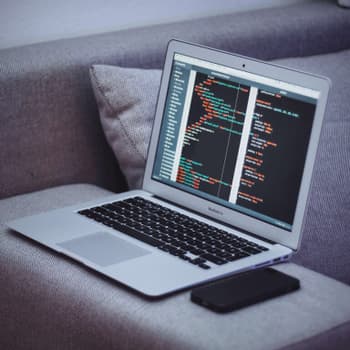The new a16z “Can’t Be Evil” (“CBE”) licences may be the white knight that the NFT community have been waiting for, but is the armour shiny enough to protect NFT holders and NFT creators’ legal rights in NFTs? NFT projects are increasingly entering the mainstream, such as the Tamadoge NFTs released this October. Nevertheless, there is still confusion around the rights an NFT holder acquires upon purchasing an NFT. For instance, consider whether you can commercialise your NFT after purchase or allow others to build upon your NFT in the de-centralised spirit of Web3. This article will explore how the CBE licences address some legal uncertainties around NFT ownership. It will look at a brief history of NFTs, the problem, current examples of licences and the CBE solution.
What is a NFT?
A non-fungible token (NFT) is a unique digital asset with an identification code and metadata that is cryptographically fixed on a blockchain ledger like a digital ‘certificate of ownership’. NFTs are minted through smart contracts which are programs that are stored on a blockchain and run when predetermined conditions are met. For example, smart contracts can automate aspects of transactions for example, by assigning ownership in an NFT. Transparency on the blockchain ledger makes NFTs effective ways to assert proof of ownership.
A Brief History of NFTs
The use of NFTs have multiplied since the 2012 Colored Coins explored the use of tokens to represent real-world assets on the Bitcoin blockchain. In 2015, the game creators for Spells Genesis pioneered issuing in-game assets onto a blockchain. Then, in 2016, people began adding assets to Pepe the Frog meme called “Rare Pepes”. Using the new ERC-721 standard, Dapper Labs upped the ante and launched the “CryptoKitties” game featuring collectible CryptKittie NFTs in 2017 and Larva Labs created 10,000 “CryptoPunks” NFT characters. By 2021, Yuga Labs launched the Bored Ape Yacht Club (“BAYC”) collection, featuring unique ape-themed NFTs.
Continue reading this article below the formThe Problem
The lack of standardised licensing for NFTs and knowledge about what rights to include in an NFT create legal uncertainty for all stakeholders. In September 2022, Galaxy Digital reported that the majority of NFTs convey zero intellectual property ownership of their underlying content. They noted a discrepancy between what NFT holders think they are buying and what they are actually buying. Generally, NFT holders do not acquire the underlying original work in an NFT. Instead, they merely acquire the metadata associated with the work that points to some other content file, typically off-chain. Without a licence or assignment of copyright from the NFT creator, the NFT holder cannot exercise any of the rights under copyright, such as reproduction, adaptation, and public display. Even when a licence does exist, it may be stored off-chain on an NFT creator’s website exposing it to uncensored alteration and creating difficulties in traceability and transparency.
Current Examples of Licences
Some NFT projects and creators have released legal frameworks governing the use of NFTs, for example:
CryptoKitties
The CryptoKitties licence prevents holders from modifying the NFT art or commercialising the NFT except to commercialise merchandise derived from the CryptoKittie as long as the annual revenue is below $100,000.
CryptoPunk
The CryptoPunk terms grant NFT holders the exclusive right to hold, sell, transfer and execute blockchain transactions involving their NFT. However, Yuga Labs owns all rights, title and interest in and to the CryptoPunk Art. NFT holders own:
- all rights;
- title; and
- interest in and to any derivative work during the licence term.
However, the NFT holder’s use of any derivative work after the licence term will require a licence from the new NFT holder.
BAYC
The BAYC terms and conditions allow NFT holders to fully commercialise their NFT because they own the underlying art absolutely. NFT holders possess an unlimited, worldwide licence to create derivative works based on the underlying art with no cap on the revenue.
These examples are in the minority because they are project or NFT creator specific. Furthermore, since they are stored off-chain on websites, they are not fail-safe because the terms can be altered easily.
The CBE Solution
AH Capital Management (“a16z”) identified a need for NFT-specific licences that can be tracked and enforced on the blockchain and provide more user certainty.
NFT creators can inherit the CantBeEvil.sol contract directly into their core NFT contract.
The six CBE licences are as follows:
1. Exclusive Commercial Rights with No Creator Rentention (CBE-ECR)
The NFT holder has full and exclusive commercial rights granted, with no termination right for hate speech. In addition, the creator does not retain any exploitation rights over the art associated with the NFT.
2. Non-Exclusive Commercial Rights (CBE-NECR)
This licence is the same as the CBE-ECR, except the NFT creator retains exploitation rights over the art associated with the NFT and can use it as well as the NFT holder.
3. Non-Exclusive Commercial Rights With Creator Retention & Hate Speech Termination (CBE-NECR-HS)
The NFT holder has full and non-exclusive commercial rights, with a termination right for the use of the NFT in association with hate speech. Furthermore, the NFT creator retains exploitation rights over the art associated with the NFT. It includes a sublicence right so the NFT holder can create derivative works, but this sublicense terminates upon the sale of the original NFT.
4. Personal Licence (CBE- PR)
The NFT holder has personal rights to use, enjoy and sell the NFT. There is no termination right for hate speech.
5. Personal Licence with Hate Speech Termination (CBE-PR-HS)
This licence is the same as the CBE-PR, except the NFT creator may terminate the licence if the NFT is associated with hate speech by the NFT holder.
6. CC0 (CBE -CC0)
All copyright in the art associated with the NFT is waived under the terms of CC0 1.0 Universal developed by Creative Commons. This form of licence gives the maximum usage rights for holders of an NFT but also allows the public to copy, modify and distribute the NFT for commercial and non-commercial purposes without seeking permission.

This fact sheet outlines your rights and obligations as an AI artist regarding intellectual property and copyright.
Accordingly, the CBE licences may provide the necessary safeguards for users. For instance, the licence in the NFT is terminated if the underlying NFT is sold to a new NFT holder. Any sublicences in the NFT Media are also terminated if the underlying NFT is sold by the owner that granted the original sublicence. This ensures NFT holders are not buying an NFT encumbered by unknown sublicensed rights. The licences also specify that copyright only transfers if the NFT is legally sold, which prevents the situation Actor Seth Green experienced when his BAYC NFT was stolen.
Key Takeaways
The new CBE licences are a welcome contribution to the community by standardising NFT licences and giving NFT holders and creators a baseline of easy to understand, irrevocable and enforceable rights. However, it is important to read the terms of each free CBE licence before tailoring them and always seek legal advice or assistance before altering the terms, remembering the licences align with US law.
If you need help with NFT licences, our experienced fintech lawyers can assist as part of our LegalVision membership. For a low monthly fee, you will have unlimited access to lawyers to answer your questions and draft and review your documents. Call us today on 1300 544 755 or visit our membership page.
Frequently Asked Questions
A non-fungible token (NFT) is a unique digital asset with an identification code and metadata that is cryptographically fixed on a blockchain ledger like a digital ‘certificate of ownership’. NFTs are minted through smart contracts which are programs that are stored on a blockchain and run when predetermined conditions are met.
Consumers can sell and buy NFTs through online NFT trading platforms.
We appreciate your feedback – your submission has been successfully received.












